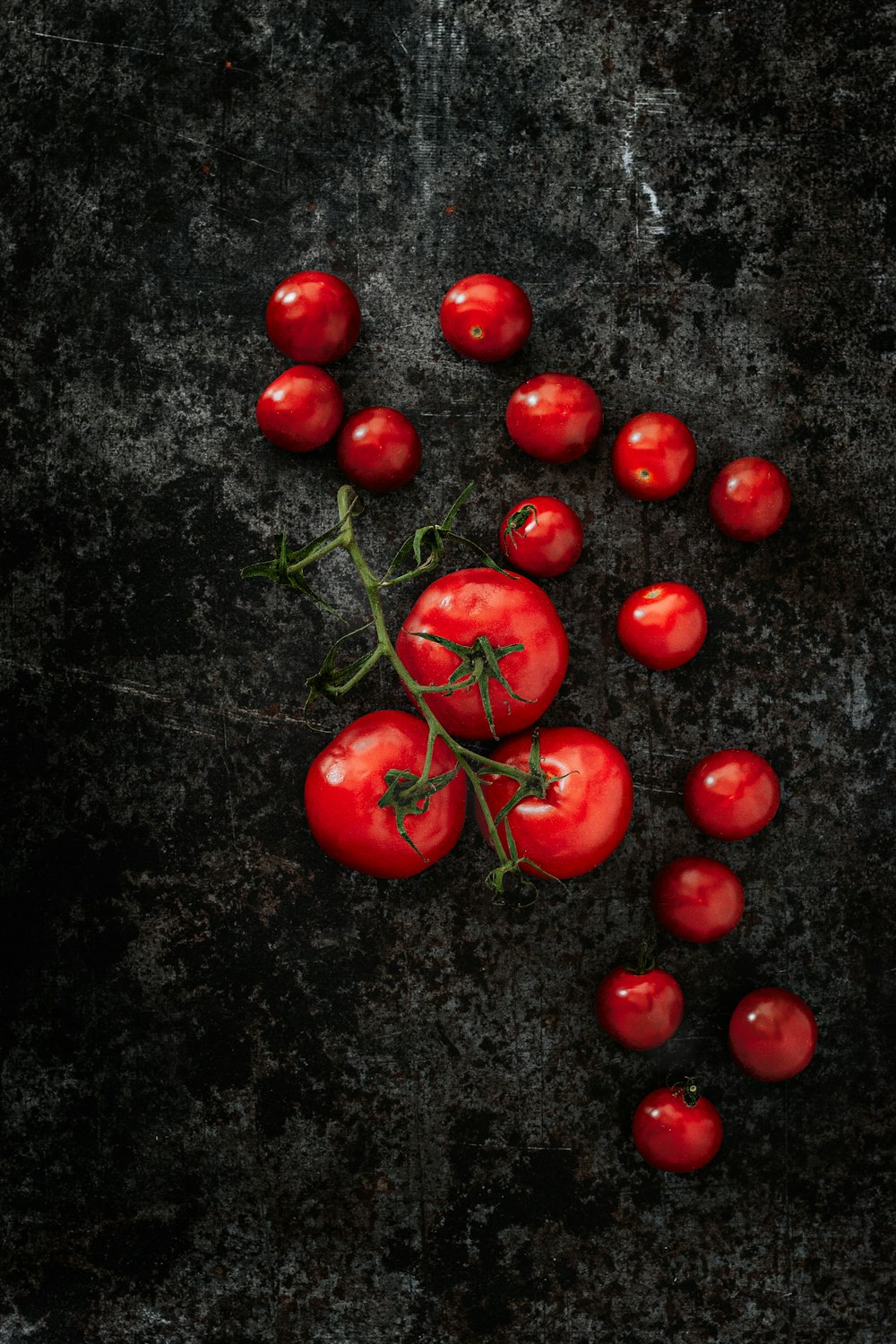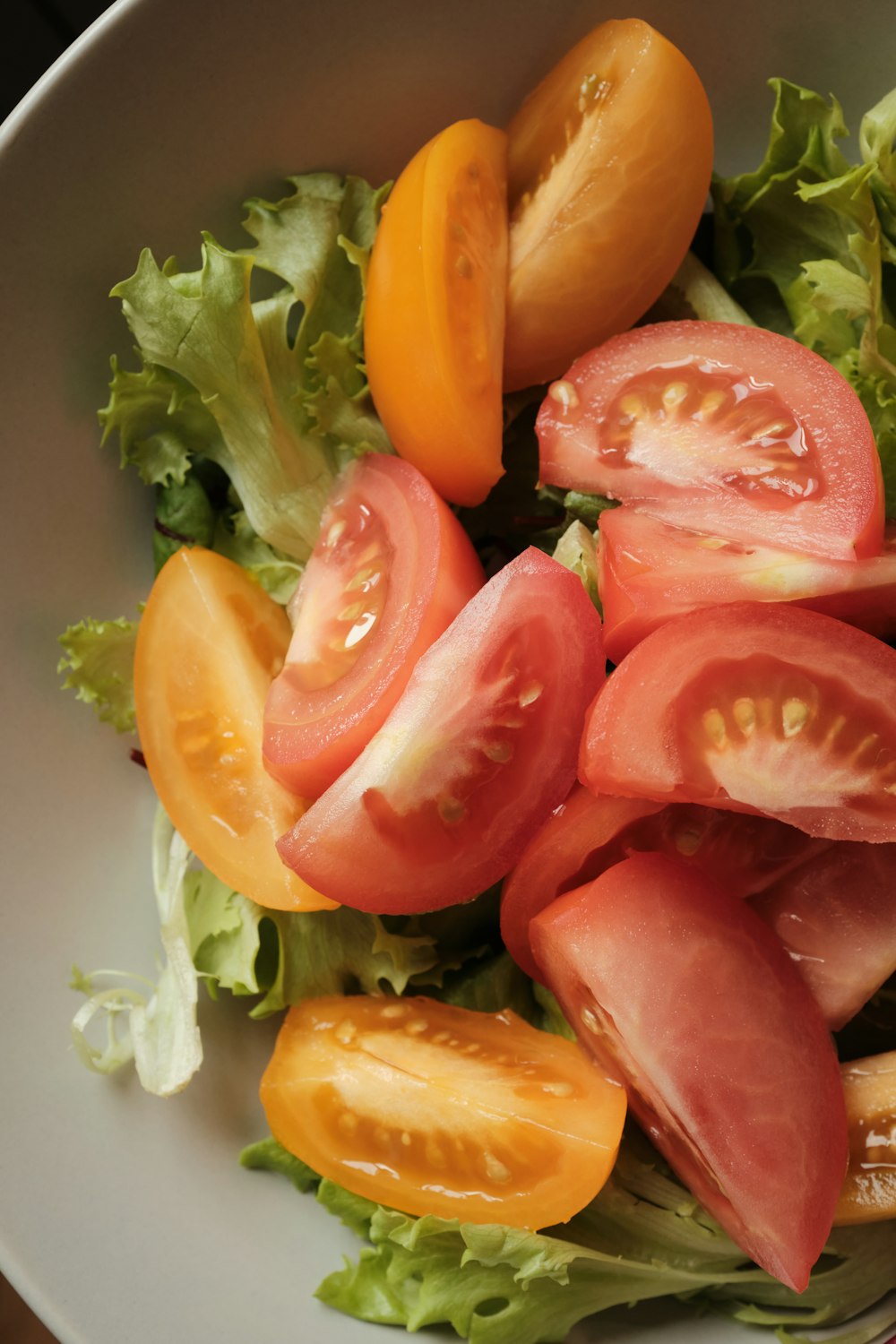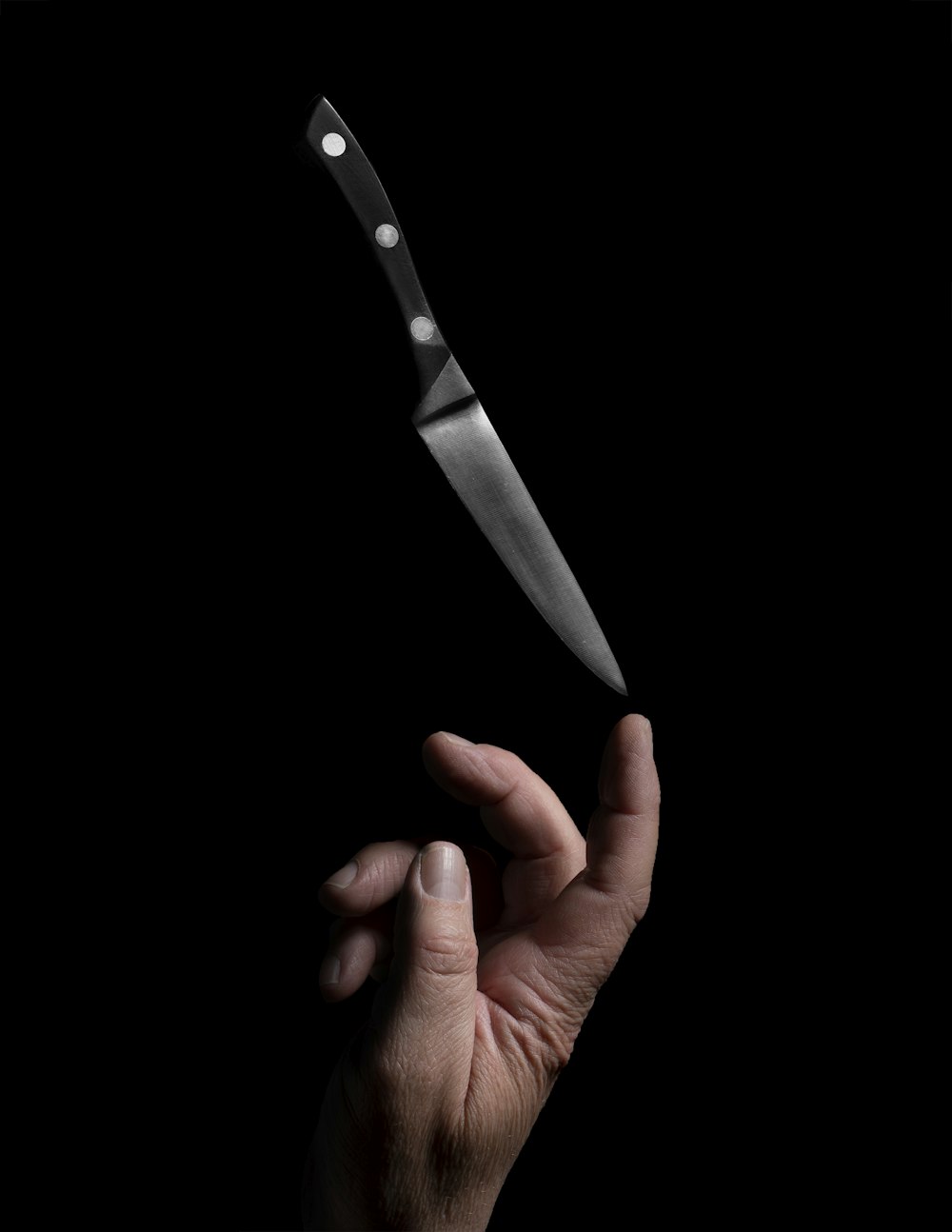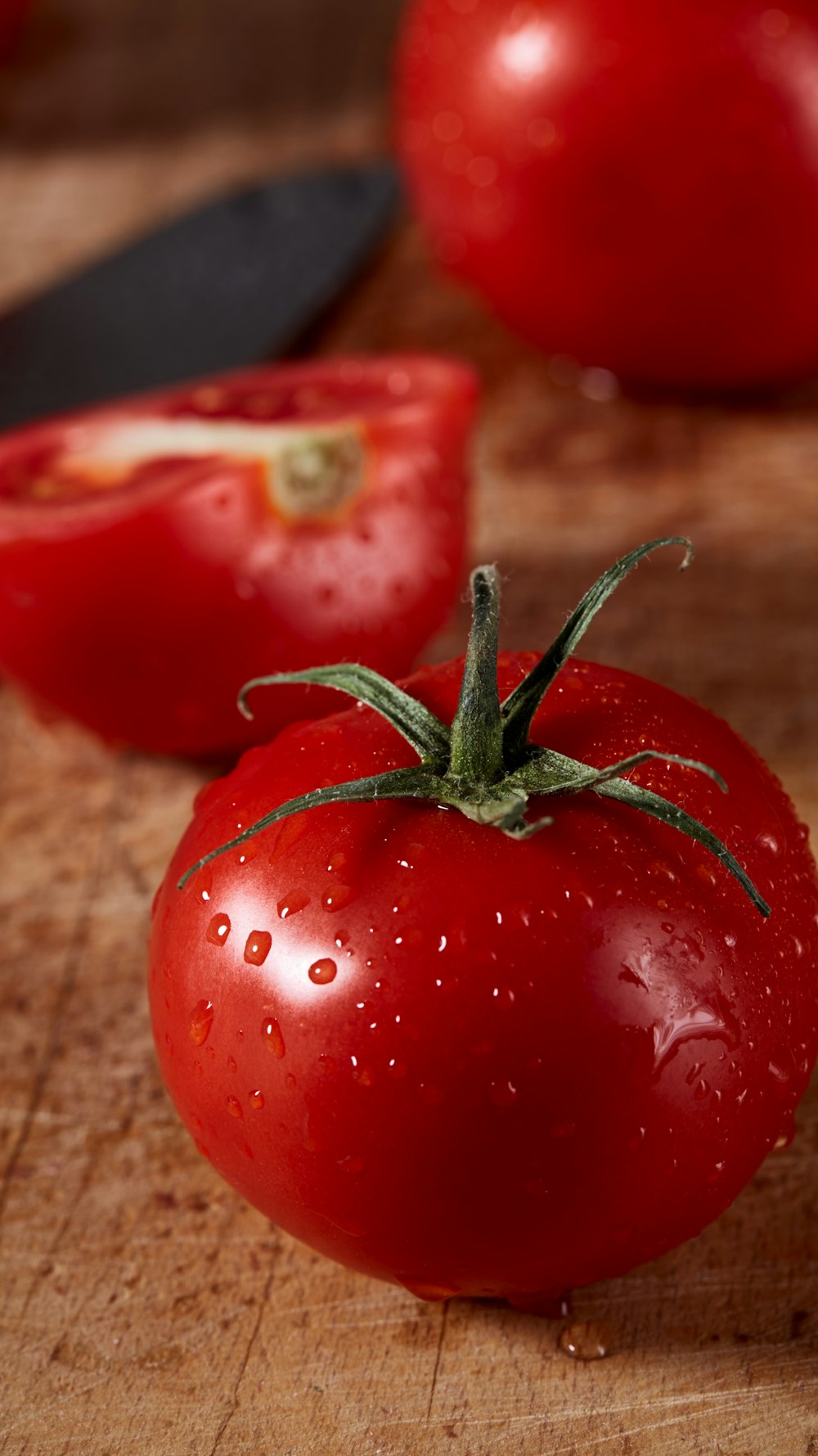Are you looking to enjoy a salad with freshly cut tomatoes? You’ll need a tomato knife if you don’t want to end up with a mush. It has a unique design that lets you cut tomatoes perfectly every time! But, have you wondered: why does a tomato knife have two points?
Its two points let you lift tomatoes without touching their flesh. And this, in turn, gives you perfect cuts all the time.
But its purpose goes beyond perfect cuts, giving you the best value with each slice. Read on to find more about tomato knives and their unique design.
What Are ‘Points’ in a Knife?
In layman’s terms, the knife’s end is what we call the ‘point‘ in layman’s terms. And these are the sharpest parts of a knife and are finished in a uniquely decorated manner. Moreover, each point holds different purposes. So, in short, a knife’s edge comes together with its spine, creating a unique blade.
There are several kinds of points available in various knives. And common ones are the drop point, needlepoint, spear point, and clip pointy.
But point design aside, these can also come in different numbers. For instance, some knives have two points at a time, and the tomato knife is the most common. On the other hand, standard chef’s knives have a single, sharp point.
So, Why Does a Tomato Knife Have Two Points?
Now that you know what points in a blade are for, you’re likely wondering: why does a tomato knife have two points? Well, there are several reasons for the blade’s forked edge, and here are the main ones:
🍅 To Core & Pierce Tomatoes

When cutting a tomato, you’ll need to remove its core first for the best results possible. After all, getting perfect tomato slices is next to impossible if you don’t pull a tomato’s core. Either way, you must do this without damaging its inner part.
But this is a complex task as the vegetable/fruit is soft, making it easy to crush. And with a single-point knife, this can be an impossible task, no matter how sharp your blade is.
As a result, tomato knives have two points or a forked edge. They allow you to go through the tomato’s upper surface without damaging its inner part. And from here, removing the core should be hassle-free.
🍅 To Remove and Lift Tomato Slices

When you’re preparing a meal and tomato is among the ingredients, you’ll need to move its slices. It can be challenging as tomato cuts are naturally soft and flimsy. Not to mention, you wouldn’t want to smash and flatten the flesh.
And given that you’ll have the slices on a cutting board, it doesn’t make it any easier.
But don’t fret, as using a tomato knife with points is what you’ll only need. Its unique design makes it easier to grab and remove the cuts from your cutting board. And not to mention, using a forked knife makes it easier to get through the skin.
With this, you can now bring the tomato slices from your board without worry.
🍅 Tip Assistance

The tip refers to the front part of a knife’s edge. And this stays under the point. In short, the tip is entwined with the point, making them inseparable partners.
With this, you can use the knife for detailed slicing and cutting, perfect for intricate pieces.
Moreover, when a knife has two points, its tip becomes easier to operate.
As a result, many people use forked knives for dedicated chopping and cutting. Hence, you can see why it can improve the overall performance of tomato knives.
🍅 To Slice More Efficiently

Unless you’re a professional, dicing tomatoes without smashing them can be challenging. And the soft inner part of this vegetable/fruit doesn’t make it any easier. So slicing a tomato without making a pulpy mush is unlikely.
Fortunately, using a tomato knife makes it 10x easier.
After all, it can decrease your chances of crushing the vegetable/fruit. Its forked edge makes it easier to go through the skin and flesh without damaging the tomato.
So regardless of your recipe, slicing tomatoes has never been this easy and mess-free!
What To Look For In Tomato Knives with Two Points
Now that you understand the importance of tomato knives and their two points, you need to know how to pick one. Here are a couple of factors to look for when choosing a forked tomato knife:
✔️ Blade Material
When choosing a tomato knife, the most crucial factor is its blade’s material. After all, today’s market is filled with low-quality knives that use subpar steel. And if you want the best cuts for your tomatoes, look carefully!
I recommend stainless or carbon steel as they’re high-quality and durable. But if you ask me, carbon steel knives are worth the extra bucks as they’re sturdier and sharp! Either way, make sure the blade has a sharp cutting edge for the best results.
✔️ Shape & Design
Tomato knives should have serrated blades and two points at the edge, otherwise known as a fork tip. This particular design lets you cut tomatoes more seamlessly, preventing a huge mess. Not to mention, it lets you penetrate the skin and hollow out the tomato easier.
Aside from that, it makes it easier to move the sliced tomatoes from your cutting board to your plates. So, keep in mind that though tomato knife blades look a little weird—they do work! And they make cutting tomatoes much more manageable.
✔️ Size
Forked tomato knives are typically larger than paring knives. However, they’re smaller than standard knives or other serrated utility blades. Either way, it’s best to go with tomato knife blades between 4 inches to 5.5 inches. That’s because this is the best range for accurate slicing, comfort, and storage.
✔️ Knife Handle
To get the best results out of any knife, you’ll want a handle that’s comfortable and easy to control. Also, it should have an ergonomic design that ensures your safety no matter how long. That’s why I recommend choosing tomato knives with ergonomic handles.
Carefully considering the factors above ensures you get the best possible tomato knife for your unique needs.
Using A Tomato Knife
So let’s say you know what kind of tomato knife you want. If this is the case, you need to learn to use the blade for the most delicious results. Below is a brief overview of using a tomato knife with two points. And following these steps should help you slice tomatoes like a pro in no time!
- Remove the core. Using the pointed or forked end of the knife, cut the tomato’s core. You can find this on top of the vegetable/fruit.
- Keep the knife at a 45° degree when cutting. Doing this ensures that you get the perfect tomato slices every time. And this includes maintaining their texture and moisture.
- Apply minimal pressure. When slicing the vegetable/fruit, apply slight pressure. After all, your goal is to keep the tomato from falling apart. So even if tomato knives make this part easier, don’t apply too much pressure.
- Follow a gentle and smooth cutting motion. When cutting, remember to be as soft and steady as possible. I recommend making a sawing motion for the best results. Doing this helps the knife slide through the skin and flesh of the tomato without issues.
What Makes a Tomato Knife Better than Regular Knives?
Some chefs may stand by their all-purpose knives, but they aren’t always the best for tomatoes. And even if they can cut the vegetable/fruit, you still get messy results. After all, a standard knife only has one point, making it easy to damage a tomato’s soft interior.
You can also forget about moving tomato slices from your cutting board to a plate with a regular knife. That’s because single-point knives are sharp, making tomatoes really easy to pierce. So you can see how tomato knives are better than ordinary knives.
Are you still not convinced? Here are factors that make tomato knives better than all-purpose blades:
🍅 Serrated Blade
Resembling a shark’s jaw, a tomato knife is anything but smooth or ordinary. And this is a good thing when it comes to slicing the vegetable/fruit. After all, it makes it easier to slice, dice, and mince tomatoes without crushing it entirely.
As a result, this unique design gives you optimal results—every time! A serrated knife cuts through foods with hard skin and soft flesh with ease. With this, you’ll be cutting tomatoes like a pro in no time.
However, you’ll need to follow a specific motion when using the blade due to its unique design. I recommend making a sawing motion for the best results. It prevents unnecessary damage, keeping your tomato cuts picture-perfect.
🍅 Flexibility
Although ordinary one-point knives are undoubtedly more versatile, tomato knives with two points aren’t far off. After all, you can also use the blade to perform cuts on other foods such as:
- Lemon
- Lime
- Cucumber
- Bread
- Cake
🍅 Two Points
When thinking about a standard chef’s knife, you likely imagine a blade with one point. And though this is functional for most foods, it doesn’t have the same effect on tomatoes. Not to mention, a single-point doesn’t provide benefits that knives with two points do.
When using a tomato knife, you’ll see that it has two points on its blade’s tip. One sits below the other, making a prong or fork-like shape. And this unique design makes it easier to cut slices more accurately.
As a result, two-point tomato knives allow you to do fine cuts and make gorgeous platter presentations.
🍅 Additional Holes
Some tomato knives have holes in their blades for the following reasons:
- It reduces friction. The holes allow the knife’s blade to avoid suction. And this lets you cut through tomatoes hassle-free.
- Easy storage. Some brands design tomato knives with blades with holes for easy storage. For instance, you can use these holes to hang the knife to the wall for convenient access.
- It decreases weight. Tomato knives are light to start with, but these holes make them even lighter. And this gives you a higher chance to perform precisely!
Frequently Asked Questions
Q: Why does a tomato knife have a forked edge?
A: A tomato knife’s serrated edge lets the blade penetrate its skin without damaging it. It does this by reducing pressure, allowing you to cut the tomato without crushing the flesh. Also, these blades let users lift and move tomato slices easier after they’ve been cut. In short, tomato knives have forked edges to minimize mess and boost accuracy!
Q: Who invented tomato knives with two points?
A: Historically speaking, tomato slicers have been around since the 1950s. However, patented versions, such as the forked tomato knife, were invented by Clayton Giangiulio. And he made the innovation publicly available in 1968 in the United States.
Q: Can I slice bread using a forked tomato knife?
A: Since tomato knives with two points are designed to go through a tomato’s thin skin, it can easily cut bread. After all, its toothlike edge is sharp enough to slice through rigid surfaces, common in bread. But I suggest using regular knives for bread as they’re more convenient to use.
Q: Do I need to purchase a serrated tomato knife?
A: Not only do tomato knives help you cut tomatoes more accurately, but they’re also tougher. After all, these blades are made to withstand tomato slicing. Moreover, regular knives can’t handle the fruit’s high acidic content. And even if you know how to keep a knife from rusting, prolonged use eventually shortens its lifespan.
Q: Does slicing tomatoes blunt my knife?
A: If you’re using a stainless steel or carbon steel knife, cutting tomatoes can blunt your knife. That’s because tomato juice is one of the most significant contributors to corrosion. And thanks to its high acidic content, tomatoes can blunt most knife blades. However, tomato knives with two points are durable enough to withstand prolonged exposure.
Final Words
Why does a tomato knife have two points? They prevent you from ripping off the tomato’s flesh, which keeps each cut intact! With this, you can efficiently prepare tomatoes without much hassle. So regardless of the dish, a tomato knife lets you slice like a pro at home.
